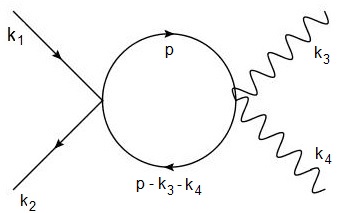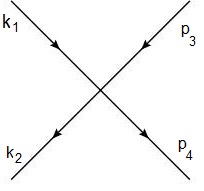I am trying to understand some sentences in a paper. In section two the following theory of a (complex) massless scalar coupled to a $U(1)$ gauge boson is introduced $$\cal{L}_4=-|D_{\mu}\phi|^2-\lambda_{\phi}|\phi|^4-\frac{1}{4g^2}F_{\mu\nu}^2\qquad{}\cal{L}_6=\frac{1}{\Lambda^2}[c_rO_r+c_6O_6+c_{FF}O_{FF}]$$ where $\Lambda$ is an energy scale suppresing the dimension 6 operators and $$\cal{O}_r=|\phi|^2|D_{\mu}\phi|^2\qquad{}O_6=|\phi|^6\qquad{}O_{FF}=|\phi|^2F_{\mu\nu}F^{\mu\nu}$$ What I want to understand is what is meant in the last paragraph of the same page
"Many of the one-loop non-renormalization results that we discuss can be understood from arguments based on the Lorentz structure of the vertices involved. Take for instance the non-renormalization of $\cal{O}_{FF}$ by $\cal{O}_R$."
my first question is, what is exactly meant when they say that an operator doesn't renormalize the other? ( I somehow suspect this has something to do with the renormalization group but since my knowledge on this matter is very recent I would like as explicit an explanation as possible)
the paragraph continues
"Integrating by parts and using the EOM, we can eliminate $\cal{O}_r$ in favor of $\cal{O}'_r=(\phi{}D_{\mu}\phi^*)^2+h.c..$ Now it is apparent that $\cal{O}'_r$ cannot renormalize $\cal{O}_{FF}$ because either $\phi{}D_{\mu}\phi^*$ or $\phi^*{}D_{\mu}\phi$ is external in all one-loop diagrams, and these Lorentz structures cannot be completed to form $\cal{O}_{FF}$."
This whole part confuses me. I want to know how do these diagrammatic arguments arise in this context and how can I learn to use them (it would be nice also if someone pointed out which are "all one-loop diagrams" that are mentioned.






